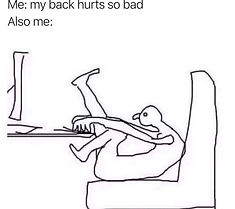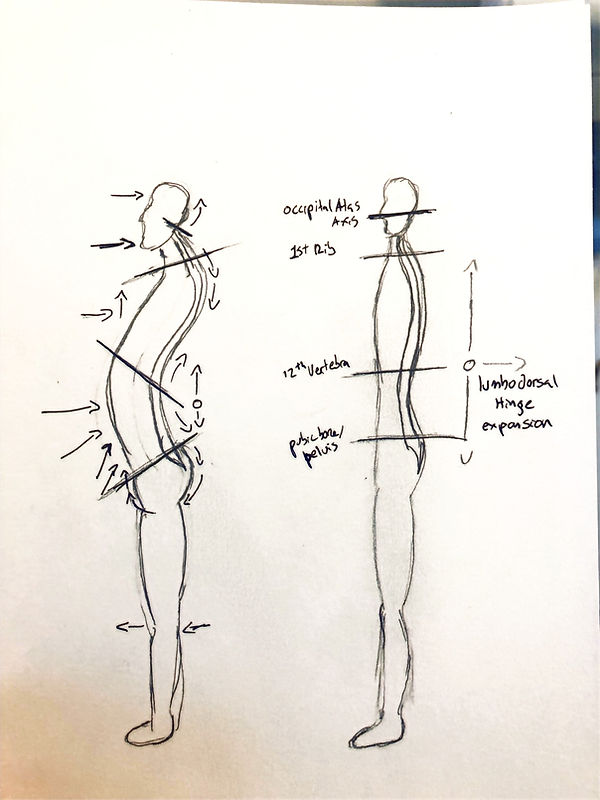
Structural Concepts
Functional Design Posture (FDP)
%2520-%2520Copy%2520-%2520Copy%25.jpg)
It worth while to occasionally check in with how we are resting in a neutral position, and how that relates to FDP- joints stacked and bilaterally symmetrical, clean vertical and horizontal lines crossing over key landmarks.
However; having a good representation of FDP doesn't necessarily mean that you are able achieve "functional ease." Functional ease is accomplished through movement therapies, repetition, and how you're able to apply that throughout your normal routine. Because joint health is dependent on dynamic movement, FDP is only significant as a stepping stone towards integrating functional ease.

When the joints are closer to stacked and symmetrical - the body uses less energy. The tensegric ( see video above) attributes exist in harmony.
You can use the image of horizontal and vertical lines extending beyond the body to get a sense of expansion within your joints.

Veterbrae can be stuck in any and all combinations of these different positions- flexion , extension, rotation, side-bent, anterior, posterior or lateral translation.
The lumbodorsal-hindge (LDH) is often the center of attention for structural repatterning. Right above our center of gravity, compression here will cause degenerative joint disease.
The pelvis is tilted forward creating an overly concave lordotic curve. This tends to create an overly convex kyphotic curve. The first rib drops down, the cervicals have to extend to keep the eyes level.

Arrows signify direction of most commonly needed correction.
Weakness in the anterior neck, upper back, and lower abdominal muscles usually accompanies this posture.
Thus, targeting these areas while strengthening, will help your body rest in a more ideal neutral (pelvis more posterior, abdominals resting posterior and superior, lift in your chest/ first rib, chin tucked and head posterior, etc...).
%2520-%2520Copy%2520-%2520Copy_.jpg)
In the second image - the pelvis tilting forward creates a shorted, more compressed spin.

%2520-%2520Copy_edited.jpg)
_edited.jpg)
%2520-%2520Copy%2520-%2520Copy%25.jpg)
When the first rib/ clavical line drops, the jaw line pushes out to maintain a horiztonal eye level. This creates compression in the cervicals, as well as at the brainstem - potentially causing a lack of blood and cerebral spinal fluid flow to the brain.









